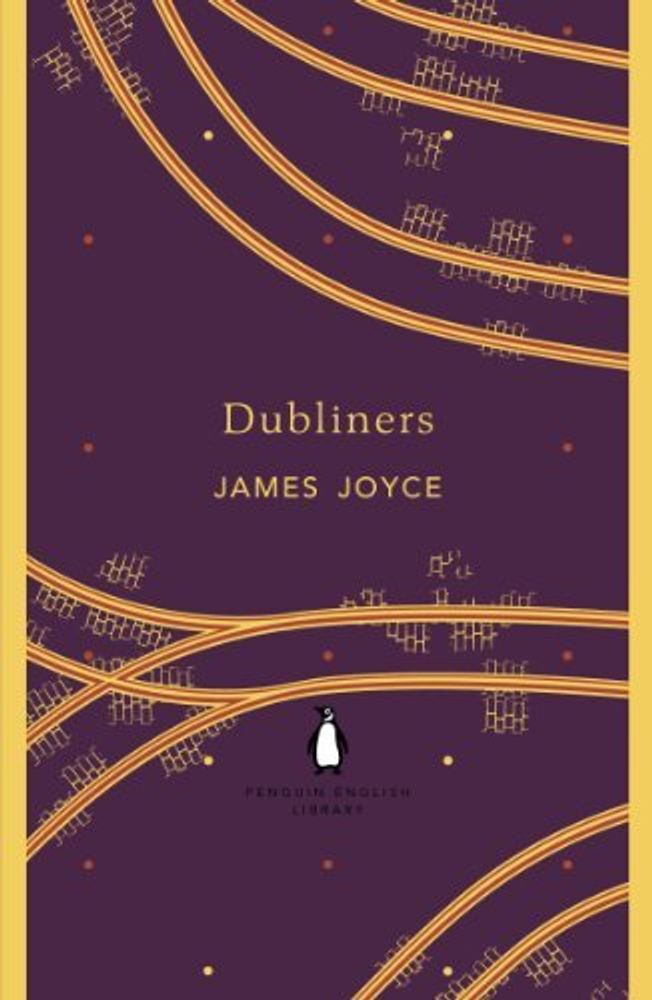Although James Joyce began these stories of Dublin life in 1904, when he was 22, and had completed them by the end of 1907, they remained unpublished until 1914 — victims of Edwardian squeamishness. Their vivid, tightly focused observations of the life of Dublin's poorer classes, their unconventional themes, coarse language, and mention of actual people and places made publishers of the day reluctant to undertake sponsorship.
Today, however, the stories are admired for their intense and masterly dissection of "dear dirty Dublin," and for the economy and grace with which Joyce invested this youthful fiction. From "The Sisters," the first story, illuminating a young boy's initial encounter with death, through the final piece, "The Dead," considered a masterpiece of the form, these tales represent, as Joyce himself explained, a chapter in the moral history of Ireland that would give the Irish "one good look at themselves." But in the end the stories are not just about the Irish; they represent moments of revelation common to all people.
-
 Английский язык
Английский язык
- Английский язык
-
УЧЕБНИКИ
- УЧЕБНИКИ
-
Дошкольное образование
- Дошкольное образование
- Bebop
- Super Safari
- Playway to English
- Learning Stars
- Welcome to Our World
- Начальная школа
- Средняя и старшая школа
-
Взрослые и студенты
- Взрослые и студенты
- Open Mind
- Straightforward 2nd Ed
- Language Hub
-
Бизнес-английский
- Бизнес-английский
- In Company 3.0
- Английский по профессиям
- Active Teach
- TeamUp
- Подготовка к ОГЭ и ЕГЭ
- English Vision
- Pandy and Friends
- Target English
- Диски к учебным курсам
-
Художественная литература, альбомы, путеводители
- Художественная литература, альбомы, путеводители
- Подарочные издания
- Новинки
- Книги
- Collins Classics
- Oxford World’s Classics
- Doctor Who
- Harry Potter
- Tolkien
- Nicholas Sparks
- John Grisham
- Альбомы
- Путеводители
-
Детские игры, книги и журналы
- Детские игры, книги и журналы
- ЖУРНАЛЫ
- Usborne
-
ИГРЫ
- ИГРЫ
- StudyCraft
- КНИГИ
- First Reading Usborne
- Julia Donaldson
- Адаптированные книги
-
Дополнительные пособия, словари, грамматики
- Дополнительные пособия, словари, грамматики
- СЛОВАРИ
- ГРАММАТИКИ
- Плакаты и наглядные пособия
- СЕРИЯ IN USE
- Цифровой контент
- Ресурсы для преподавателей
- Пособия для подготовки к экзаменам
-
Нон-фикшн, академическая литература
- Нон-фикшн, академическая литература
- Нон-фикшн
-
Cambridge
- Cambridge
- IB Diploma
- Pearson
- Macmillan
- National Geographic Learning
- Oxford
- Black Cat
- Мы рекомендуем
-
 Немецкий язык
Немецкий язык
- Немецкий язык
-
HUEBER
- HUEBER
- Menschen
- KLETT
- Cornelsen
- Цифровой контент
-
Художественная литература
- Художественная литература
- Детские книги
- Remarque
- ИГРЫ
-
 Французский язык
Французский язык
- Французский язык
-
Дошкольное образование и начальная школа
- Дошкольное образование и начальная школа
- Tatou le matou
- Les Petits Loustics
- Les Loustics
- Grenadine
- Ludo et ses amis NEd
- Super Max
-
Средняя и старшая школа
- Средняя и старшая школа
- Generation
- Decibel
- Adomania
- Adosphere
-
Студентам и взрослым
- Студентам и взрослым
- Edito
- Alter Ego +
- Alter Ego
- Texto
- Cosmopolite
- Международные экзамены
-
Адаптированная литература
- Адаптированная литература
- Sami et Julie
- Преподавателям
- Языковые навыки
- Грамматика
- Художественная литература
- Black Cat
- Didier
- Hachette
-
 Испанский язык
Испанский язык
-
 Итальянский язык
Итальянский язык
- Итальянский язык
- Средняя и старшая школа
- Студентам и взрослым
- Адаптированная книга
-
Художественная литература
- Художественная литература
- Детские книги
- Грамматика
- Языковые навыки
- Дошкольное образование и начальная школа
- Преподавателям
-
Цифровой контент
- Цифровой контент
- Cideb\Black Cat e-readers
- ИГРЫ
-
 Русский язык
Русский язык
-
 Другие языки
Другие языки
- Другие языки
- Китайский язык
-
 SALE
SALE
- SALE
- Альбомы
- Книги
- Путеводители
-
Английский для взрослых
- Английский для взрослых
- Move
-
Английский для детей
- Английский для детей
- Playway to Eng
- Hippo and Friends
- The English Ladder
- My First Eng Adventure
- Грамматика
- Бизнес английский
- Подготовка к тестам
- Русский как иностранный
- Английский начальная школа
- Английский средняя школа
- Английский старшая школа
- Английский взрослые и студенты
-
 BOOKR
BOOKR
-
 Дополнительные товары
Дополнительные товары


